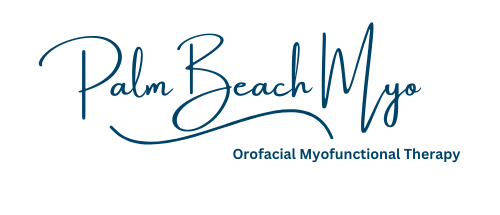"Why Adults Can Benefit from Myofunctional Therapy: It's Never Too Late to Optimize Your Health!"
When most people hear about myofunctional therapy, they often think it’s a treatment reserved for children, especially those with orthodontic concerns or tongue-tie. However, myofunctional therapy is equally impactful—and sometimes life-changing—for adults. Whether you're dealing with chronic pain, sleep issues, or jaw discomfort, this therapy offers an effective, non-invasive solution for improving overall health and function.
If you’re wondering why you should consider myofunctional therapy as an adult, this blog will walk you through the benefits, what it involves, and how it can transform your health at any age.
What Is Myofunctional Therapy?
Myofunctional therapy is a specialized program of exercises designed to improve the function of the orofacial muscles (the tongue, lips, cheeks, and jaw). These muscles play a critical role in breathing, swallowing, chewing, speaking, and even posture.
By addressing improper oral habits and retraining these muscles, myofunctional therapy helps restore balance and function to the entire orofacial system.
Why Adults Need Myofunctional Therapy
While many people associate myofunctional therapy with childhood development or orthodontic care, the truth is that adults can experience a wide range of issues that stem from dysfunctional oral and facial habits. Here’s why you might need it:
1. Improve Breathing and Airway Function
Do you breathe through your mouth instead of your nose? This habit can lead to poor oxygenation, disrupted sleep, and even chronic fatigue. Myofunctional therapy teaches proper tongue posture and nasal breathing, which improves oxygen flow and reduces issues like snoring or sleep apnea.
Who benefits? Adults with sleep apnea, chronic mouth breathing, or daytime fatigue.
2. Alleviate TMJ Disorders
Jaw pain, clicking, or difficulty chewing are often linked to imbalances in the orofacial muscles. Myofunctional therapy helps relieve strain on the temporomandibular joint (TMJ) by improving muscle tone and coordination.
Who benefits? Adults with jaw pain, clenching, grinding, or TMJ dysfunction.
3. Enhance Posture and Alignment
The position of your tongue and how you breathe can affect your posture. Improper oral posture can contribute to forward head posture and spinal misalignment. Myofunctional therapy addresses these underlying issues to support better body alignment.
Who benefits? Adults with neck, shoulder, or back pain caused by poor posture.
4. Support Orthodontic Stability
If you’ve had braces or other orthodontic treatments, improper tongue posture or swallowing patterns can undo years of work. Myofunctional therapy ensures that your tongue and muscles support the alignment of your teeth, preventing orthodontic relapse.
Who benefits? Adults who have completed orthodontic treatment or are undergoing it.
5. Aid in Tongue-Tie Recovery
Many adults live with the effects of undiagnosed or untreated tongue-tie, which can cause speech issues, jaw pain, or difficulty swallowing. Myofunctional therapy is essential for rehabilitating the muscles after a tongue-tie release procedure, improving function and long-term outcomes.
Who benefits? Adults recovering from tongue-tie surgery or living with undiagnosed restrictions.
6. Improve Sleep Quality
Poor tongue posture and mouth breathing are major contributors to sleep disorders like obstructive sleep apnea. Myofunctional therapy can retrain the muscles to promote nasal breathing, improving sleep quality and reducing health risks.
Who benefits? Adults with sleep apnea, snoring, or poor sleep hygiene.
7. Enhance Speech Clarity
Speech difficulties in adulthood can often be traced back to improper oral habits. Myofunctional therapy helps optimize tongue placement and muscle coordination, leading to clearer speech.
Who benefits? Adults with speech issues, lisps, or difficulty articulating certain sounds.
What Does Myofunctional Therapy Involve?
Myofunctional therapy is personalized to your unique needs and goals, but it typically includes:
Assessment: A thorough evaluation of your orofacial structure, breathing patterns, and muscle function.
Exercises: Simple, targeted exercises to strengthen and retrain your orofacial muscles. These may include tongue lifts, lip strengthening exercises, and nasal breathing drills.
Habit Correction: Guidance on eliminating harmful habits like mouth breathing, tongue thrusting, or clenching.
Consistency: Like physical therapy for your body, success depends on your commitment to regular practice.
Benefits of Myofunctional Therapy for Adults
Better breathing: Shift from mouth breathing to nasal breathing for improved oxygen flow.
Reduced pain: Alleviate jaw pain, tension headaches, and neck discomfort.
Improved sleep: Reduce snoring and symptoms of sleep apnea for better rest.
Enhanced appearance: Support proper facial and jaw development, which can improve your profile.
Greater confidence: Improve speech, smile aesthetics, and overall oral health.
Is Myofunctional Therapy Right for You?
If you’ve been living with chronic pain, poor sleep, or oral health challenges, myofunctional therapy could be the missing piece in your health journey. It’s especially helpful if you’ve tried other treatments without lasting results.
Final Thoughts: It's Never Too Late to Thrive
As an adult, you might think it’s too late to correct oral habits or improve your airway function—but nothing could be further from the truth. Myofunctional therapy is a powerful tool to optimize your health, no matter what your age.
By addressing the root causes of issues like TMJ pain, sleep apnea, or orthodontic relapse, myofunctional therapy helps you reclaim your health and well-being—one breath, one posture, and one exercise at a time.
If you are ready to take the next step in your health journey
📞 Contact Palm Beach Myo Today
🌐 Visit: www.PalmBeachMyo.com
📧 Email: palmbeachmyo@gmail.com
📍 Call: (561) 303-6004
Helping You Breathe, Sleep, & Live Better.
